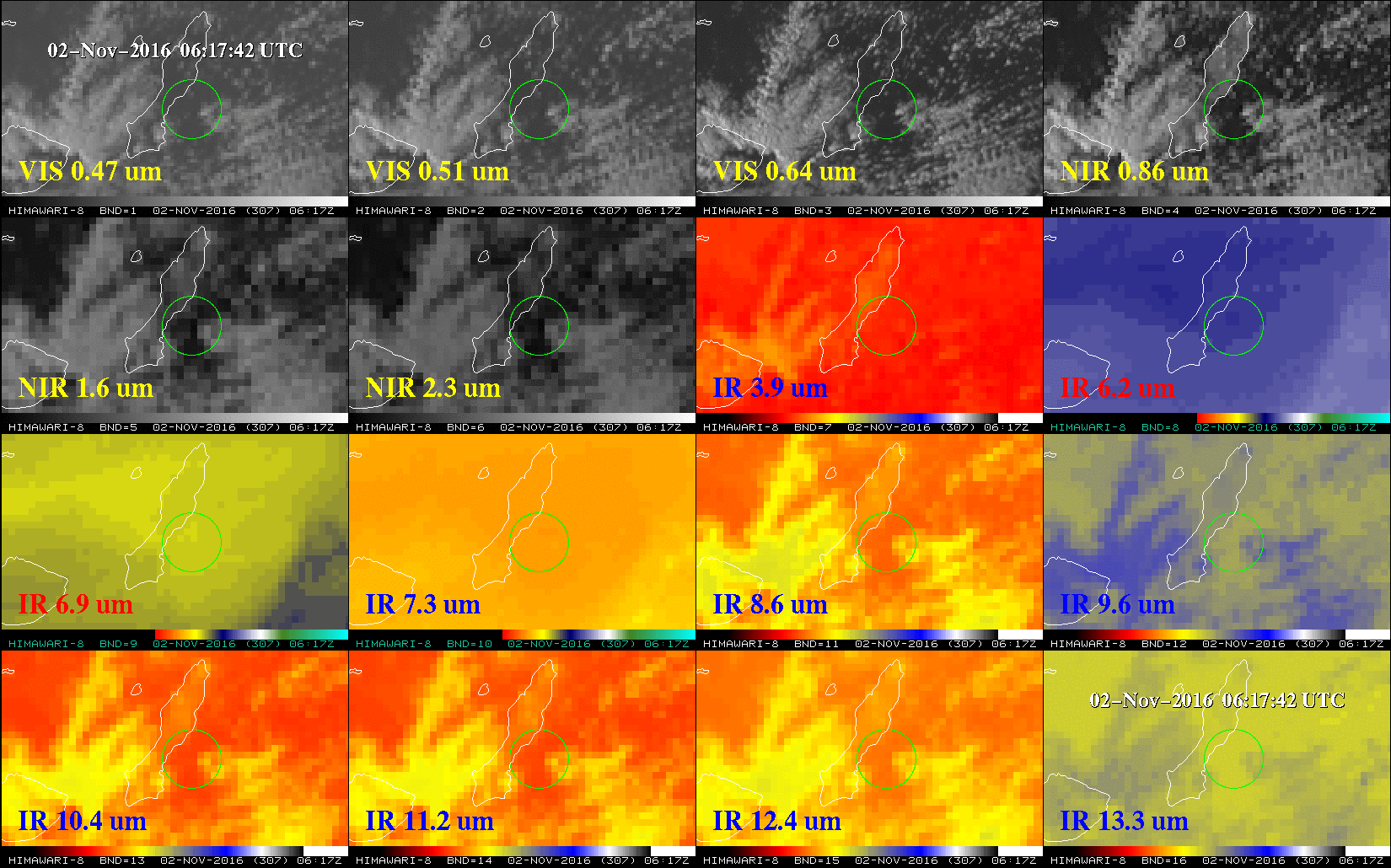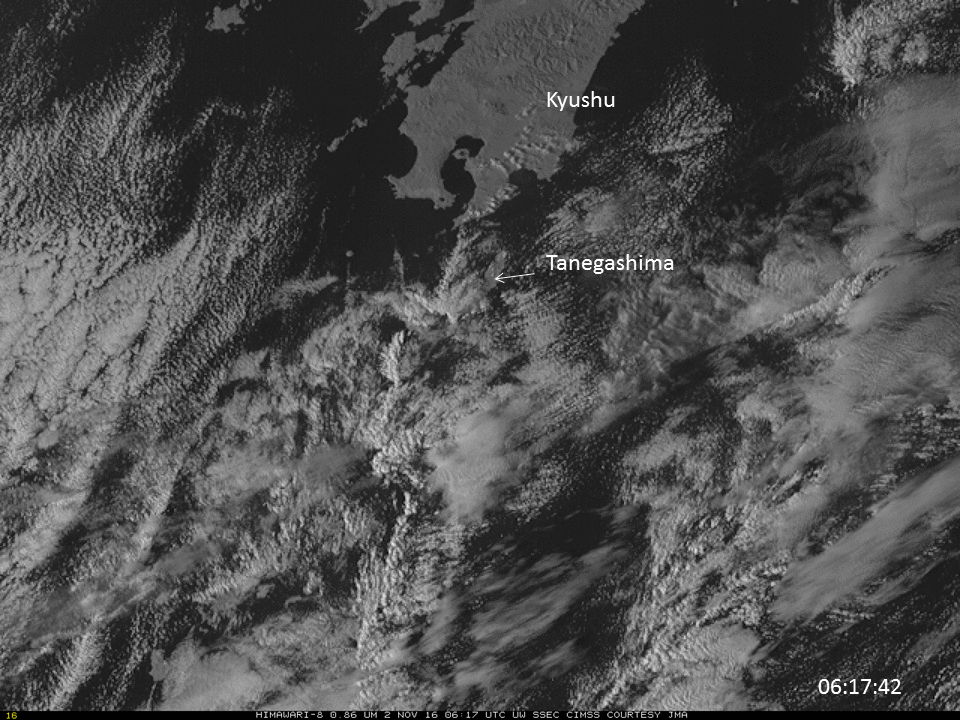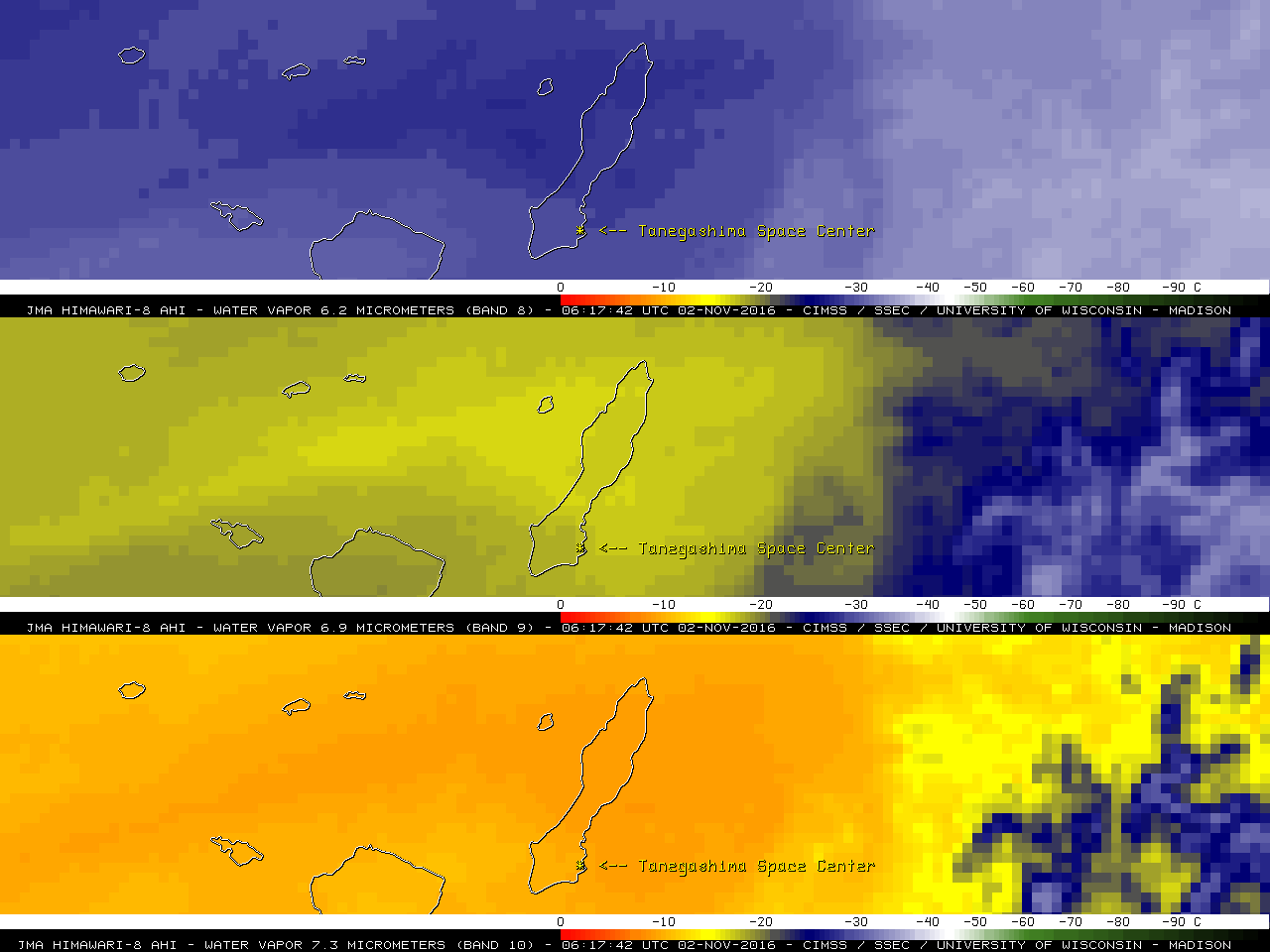Himawari-9 Launches

Himawari-8 imagery of all 16 AHI Bands, as indicated, bracketing the launch time of Himawari-9 (Click to enlarge)
Japan successfully launched the Himawari-9 satellite from the Tanegashima Space Center (near the southern tip of Tanegashima in the Osumi Islands south of Kyushu), a back-up to Himawari-8, shortly after 3:20 PM local time (0620 UTC) on 2 November 2016 (News Link 1, 2, 3, 4). Images showing all 16 Himawari-8 AHI spectral bands bracketing the 0620 UTC launch time are shown above; signatures of the warm thermal anomaly (from the burning of the solid rocket boosters) as well as the moisture of the rocket condensation cloud plume were evident in the Shortwave Infrared (3.9 µm) and Water Vapor (6.2 µm, 6.9 µm and 7.3 µm) bands, but a signal was also detectable in the Infrared 8.6 µm, 12.2 µm and 13.3 µm bands. The Himawari-8/9 AHI instrument is nearly identical to the ABI instrument on GOES-R — so similar imagery will be routinely available once GOES-R becomes operational in 2017.

Himawari-8 Band 4 (0.86 µm) Visible Imagery for times bracketing the launch of Himawari-9 on 2 November 2016 (Click to enlarge)
The animation above shows the rocket plume in the Band 4 (0.86 µm) imagery (Band 4, the so-called “Veggie Band”, better discriminates between land and water so that the island of Tanegashima is more distinct) from Himawari-8, in the image at 0622 UTC. (Annotated 0622 UTC Image is here). The plume appears north of the launch site (which is located at the southern tip of the island).
A true-color image, below, that includes the three visible channels from Himawari-8 (Band 1 at 0.47 µm, Band 2 at 0.51 µm and Band 3 at 0.64 µm, with the Band 2 “Green Band” boosted by information in the Veggie Band at 0.86 µm) shows a plume, perhaps, emerging from the cloud field at the southern tip of the island.
Another view of the 3.9 µm Shortwave Infrared imagery, below, shows a short-lived hot-spot near where the Band 4 imagery shows the plume. Note: due to parallax, the location of the high-altitude hot spot appears farther north than its actual location.
Himawari-8 Band 7 (3.9 µm) Shortwave Infrared Imagery for times bracketing the launch of Himawari-9 on 2 November 2016 (Click to enlarge)
Visible Imagery for the same three times, below, suggests a plume may be present (toggle between Visible and Shortwave Infrared images).
Himawari-8 Band 3 (0.64 µm) Imagery for times bracketing the launch of Himawari-9 on 2 November 2016 (Click to enlarge)
As mentioned above, signatures of the warm thermal anomaly and the moisture of the rocket condensation cloud plume were also evident on the three Himawari-8 Water Vapor bands, shown below — strong westerly winds aloft (satellite | model) quickly transported the high-altitude portion of the rocket plume eastward.
A video of the launch is here, with the launch itself at 44 minutes.

